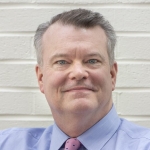
 We’ve blogged (quite energetically) about the difference between handwritten and laptop notes.
We’ve blogged (quite energetically) about the difference between handwritten and laptop notes.
Of course, other note-taking differences merit investigation as well.
For example: if students take handwritten notes, is it better to give them:
a complete lecture outline,
a partial lecture outline,
a bare-bones lecture outline,
or
a complete graphic organizer,
a partial one, or
an empty one?
Over at the Learning Scientists, Carolina Kuepper-Tetzel explores this question, and adds some thoughts of her own.
One Man’s Experience
This article particular caught my eye because it applies so directly to my own work.
When I talk with teachers, students, or parents about brains, I always provide them with option #5 above: an incomplete graphic organizer.
My goal: reduce working memory load. (I’m always focused on reducing extraneous working memory load.)
The informal feedback I get is strongly positive. Many teachers, in fact, tell me that they’ve started using the same form with their own students.
When you read Dr. Kuepper-Tetzel’s post, you’ll see how well (if at all) my practice accords with the research we have.





